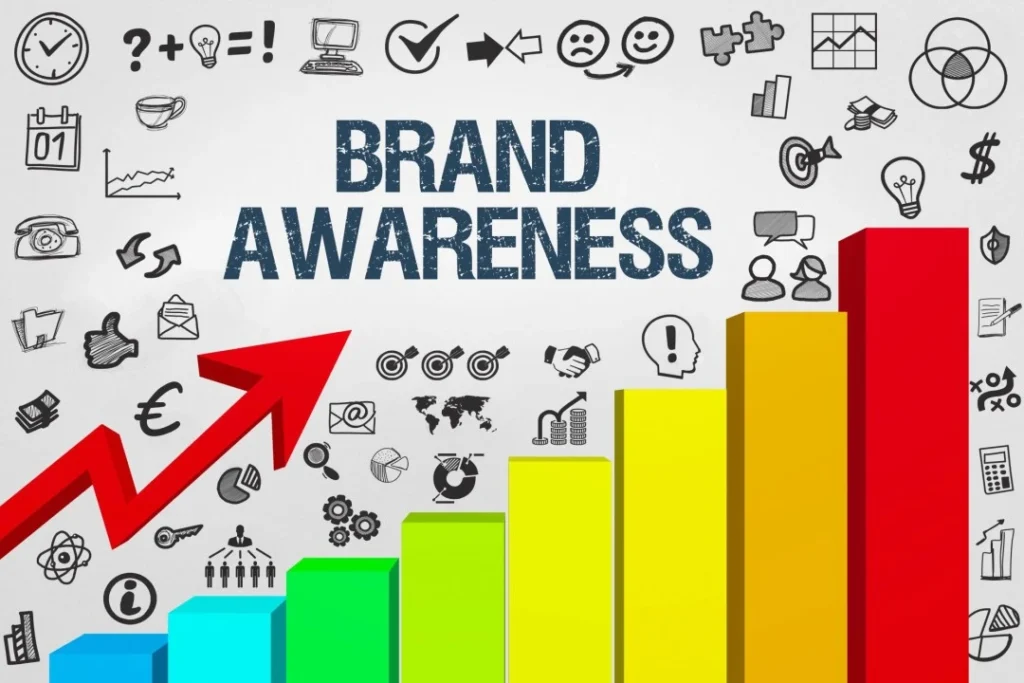Brand awareness is a critical metric in digital marketing, indicating how familiar your target audience is with your brand. Measuring brand awareness helps marketers evaluate the success of their campaigns and refine strategies for greater impact. In this blog, we will explore effective ways to measure brand awareness in your digital campaigns.
1. Track Website Traffic
Why It Matters: An increase in website traffic often correlates with growing brand awareness. It indicates that more people are actively seeking your brand online.
How to Measure:
- Use tools like Google Analytics to monitor overall traffic trends.
- Pay attention to direct traffic, as it shows users are typing your website URL directly.
- Analyze referral traffic to see how external platforms contribute to awareness.
2. Monitor Social Media Metrics
Why It Matters: Social media platforms are powerful channels for spreading brand awareness. Metrics like mentions, shares, and follower growth reflect how well your brand resonates with the audience.
How to Measure:
- Track your follower count over time to gauge growth.
- Use social listening tools like Brandwatch or Sprout Social to monitor mentions of your brand.
- Analyze engagement metrics, such as likes, comments, and shares, to understand audience interaction.
3. Assess Search Volume Data
Why It Matters: A rise in branded search volume indicates that more people are looking for your brand specifically, which reflects improved awareness.
How to Measure:
- Use tools like Google Trends to analyze search interest over time.
- Monitor branded keywords in your Google Search Console account.
- Compare search volumes before and after your campaign launch to identify changes.
4. Evaluate Impressions and Reach
Why It Matters: Impressions and reach metrics show how many people are exposed to your brand through digital ads and content.
How to Measure:
- Use ad platforms like Google Ads and Meta Ads Manager to review impression and reach metrics.
- Focus on metrics for display and video ads, as they are often awareness-focused.
- Monitor unique reach to ensure that your ads are being seen by a diverse audience.
5. Conduct Brand Surveys
Why It Matters: Surveys provide direct insights into how well your audience recognizes and recalls your brand.
How to Measure:
- Use tools like SurveyMonkey or Google Forms to create brand awareness surveys.
- Ask questions about brand recall, recognition, and perception.
- Conduct surveys both before and after your campaigns to measure the impact.
6. Measure Social Share of Voice (SOV)
Why It Matters: Social Share of Voice compares the volume of conversations about your brand to competitors, indicating your brand’s prominence.
How to Measure:
- Use tools like Hootsuite or Mention to track mentions of your brand and competitors.
- Calculate SOV as a percentage: (Your brand mentions / Total industry mentions) x 100.
- Monitor changes in SOV over time to evaluate campaign effectiveness.
7. Analyze Video Metrics
Why It Matters: Video content is highly engaging and a great medium for building awareness.
How to Measure:
- Track views, watch time, and audience retention rates on platforms like YouTube or Instagram.
- Monitor how often videos are shared or embedded on other platforms.
- Use tools like Wistia to analyze detailed video performance metrics.
8. Monitor Brand Mentions in the Press and Online Media
Why It Matters: Coverage in online media and press releases can significantly boost brand awareness.
How to Measure:
- Use PR tools like Meltwater or Cision to track media mentions.
- Monitor backlinks and referral traffic from press mentions.
- Analyze the sentiment and reach of published articles about your brand.
9. Review Engagement with Paid Media Campaigns
Why It Matters: Paid campaigns, particularly those focused on display and awareness objectives, provide measurable metrics on exposure.
How to Measure:
- Monitor CTR (Click-Through Rate) and viewability of display ads.
- Analyze audience interactions with native ads or sponsored content.
- Assess performance through KPIs like cost per thousand impressions (CPM).
10. Leverage Referral Traffic and Brand Partnerships
Why It Matters: Collaborations and partnerships can expand your audience and increase awareness.
How to Measure:
- Track referral traffic using Google Analytics.
- Analyze the performance of co-branded content or joint campaigns.
- Monitor the long-term impact on traffic and engagement from partnerships.
Conclusion
Measuring brand awareness involves combining qualitative and quantitative approaches. By tracking these metrics consistently, you can gain valuable insights into your campaign’s impact and identify opportunities for improvement. Whether you’re using social media, SEO, or paid campaigns, the right metrics ensure your efforts contribute to a stronger brand presence.
